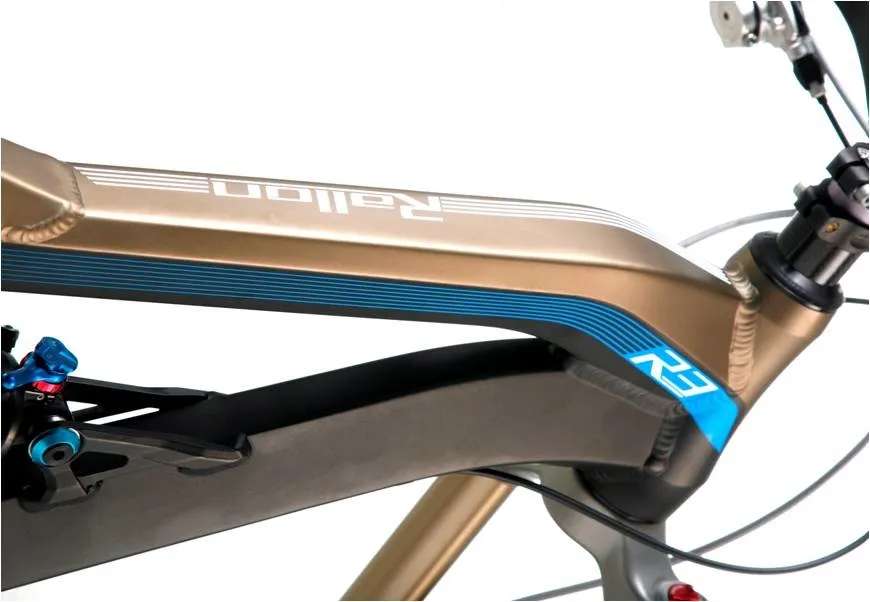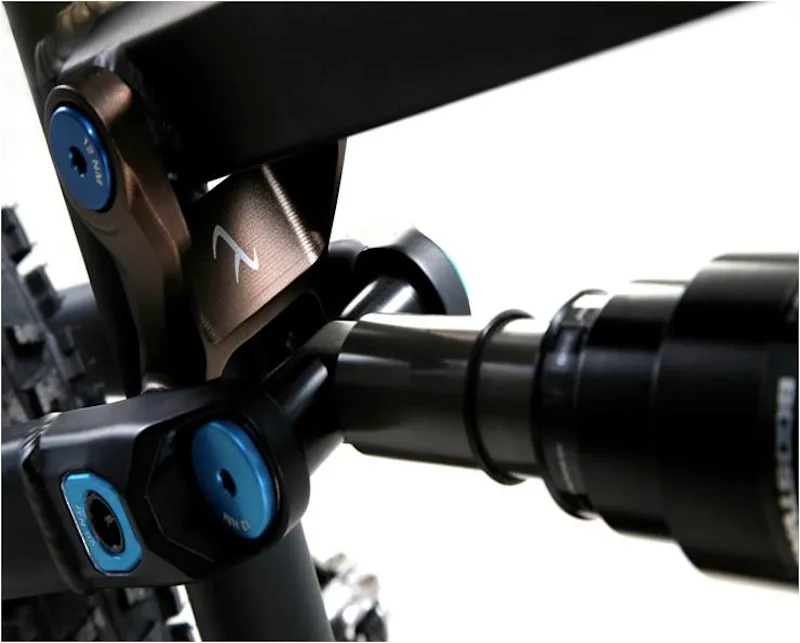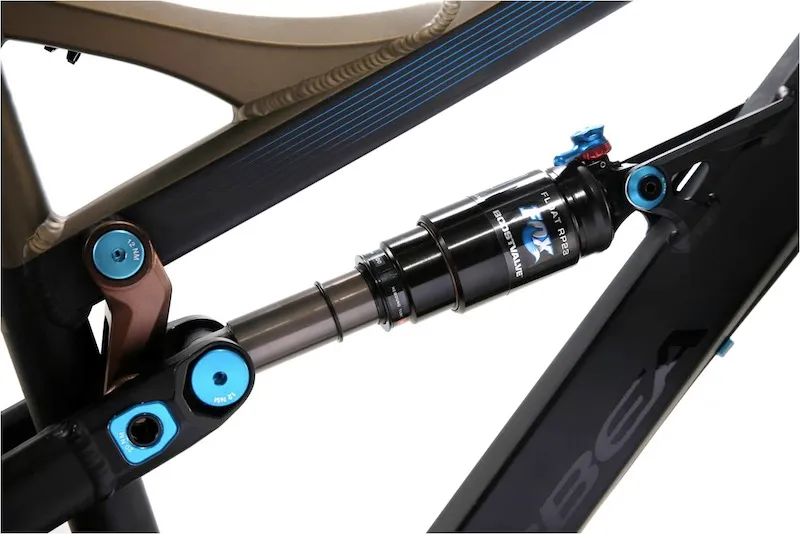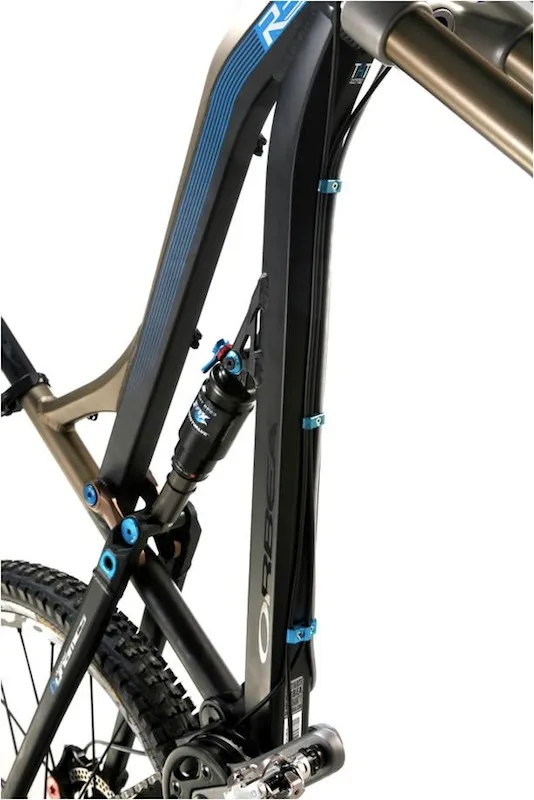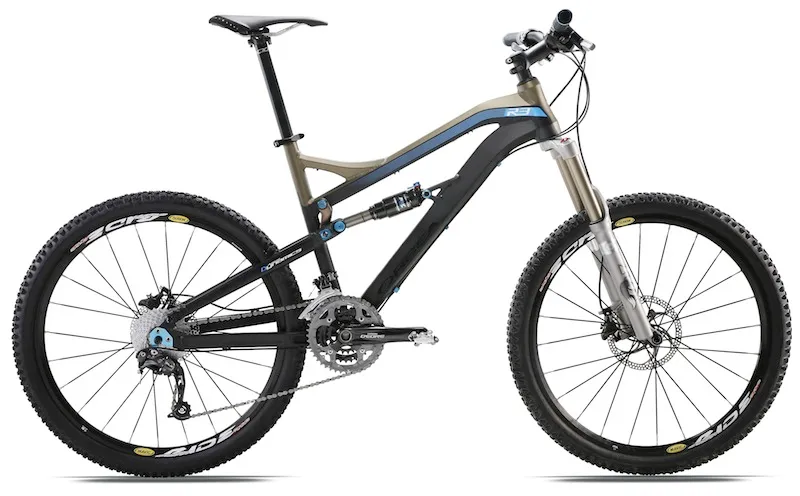In 2011, Orbea will no longer be only associated with Julien Absalon and the ProTour in the US. Their new Rallon enduro bike will surely open trail riders’ eyes to the Spanish company.
In Europe, people know what enduro bikes are for; they’re for racing enduros, of course. The enduro racing format is comparable to motorcycle enduro or the auto rally racing that’s found in the US. Riders take on multiple stages over the course of a couple days and they do it on what we consider trail bikes; total lowest time wins.
“I would love to see the European enduro format come to America,” said Ronnie Points, of Orbea’s global product team, to BikeRadar. “It’s the perfect weekend event for the mountain bike scene. I hope this bike takes people to it. Sure, it’s about racing, but it’s as much about riding and meeting people.”
Three models
Orbea offers three models of the Rallon for 2011. All three models share the same heavily hydroformed Tricone aluminium frame, which features a tapered 1.125- to 1.5-inch head tube and lifetime warranty. All models also use a custom Fox RP23 boost valve shock with XV air can that’s been specifically tuned for the bike’s suspension design.

Tapered head tubes and steerers are commonplace in today's trail bike category.
The top of the range Rallon 10 is finished with a bells-and-whistle all-mountain group highlighted by Truvativ’s HammerSchmidt internally geared two-speed crank, crankbrothers JoplinR adjustable seatpost, Fox 36 Talas RC2 fork and Formula R1 brakes. The Rallon 10 retails for US$5,649.
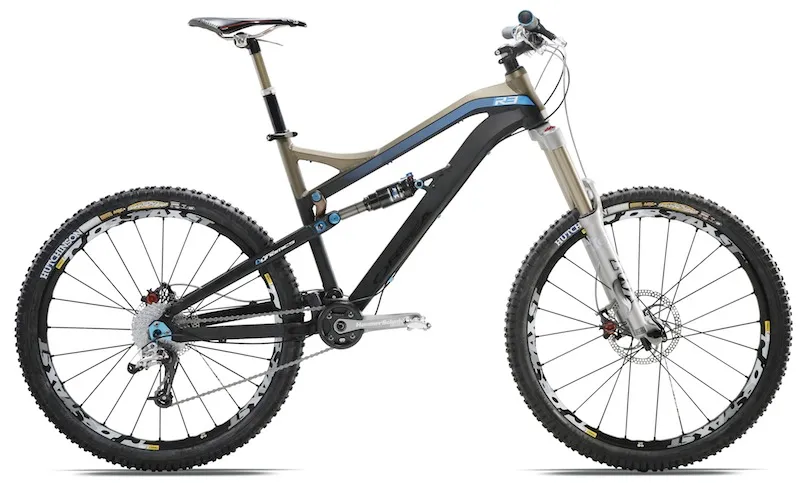
The Rallon 10.
The Rallon 30 features Shimano’s XT component group supplemented with Formula RX brakes and Fox 32 Talas RLC fork. The model costs $4,199.
The Rallon 50 swaps for Shimano SLX and a Fox 32 Float RL fork for $3,199.
The first 150-200 Rallons shipped to the US should be available in May at select dealers.
As part of Orbea’s Rallon launch demos are offered at seven dealers across the US. Riders can demo the bikes with supplied GoPro cameras and post their personal Rallon test rides to Orbea’s US Facebook page.
Development: the perfect suspension curve?
Like all rigs in the trail bike category, the Rallon’s design strives to offer best balance of climbing and downhill performance. To achieve this end, Orbea entered into a three-year project to study dynamic bicycle suspension kinematics with the Spanish technical research center, CEIT (Guipuzcoa Studies and Technical Research Centre).
Under the partnership, Orbea developed their Advanced Dynamics suspension platform, which takes into account the four characteristics they feel are most important for suspension bikes in this category: the bike’s dynamic suspension platform, perfect use of its suspension travel, its customized damper and its sealed bearing system.
Orbea believes that Advanced Dynamics allowed them to create a perfect suspension ratio curve (which they've called Lambda) for Rallon. Orbea says the Lambda Curve combines the lightweight benefits of an air-sprung shock with the linear feel of a coil-spring shock.
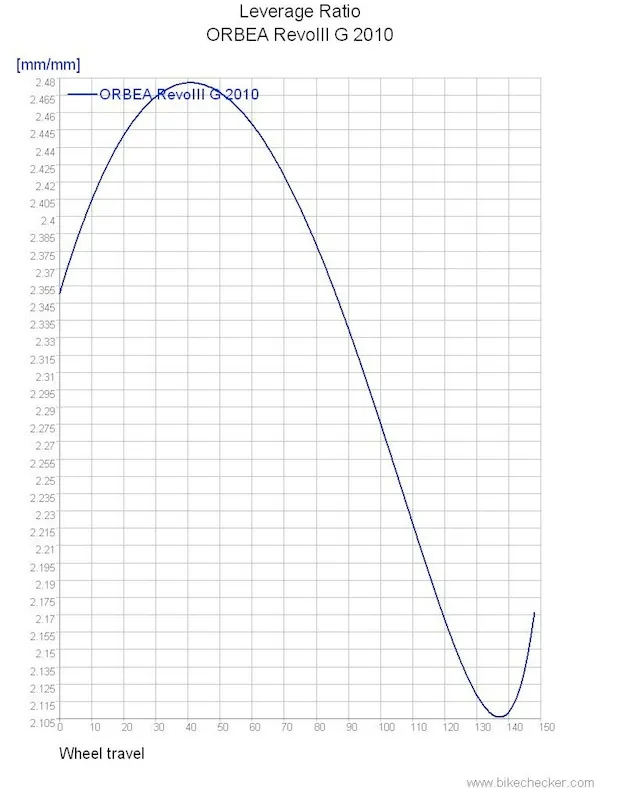
The Lambda curve.
By using the Lambda Link, they manipulate the leverage ratio to make full use of the suspension’s travel to obtain a smooth travel with three main characteristics: high sensitivity to small bumps due to a low initial leverage ratio and the compliancy of the shock’s damper, making for plush and active travel at the beginning of the stroke, whether climbing or descending. Next comes a linear feel for medium impacts by use of a regressive ratio curve. And finally, the design offers a plush feel for big hits compensating for the excessive progressivity of the air shock with the ratio curve to achieve complete use of the shock’s stroke.
“You’re always looking for the best hybrid solution,” said Points. “We looked at everything that was out there and ran the concepts through the software system and with the protocol it’s set for - which is to find equilibrium everywhere, ascending and descending - what we found as the perfect situation, is what we’ve gone with.”
Points continued to explain that lateral stiffness and durability were important factors in deciding to stick with the linkage activated single pivot design. It allows the use of side-by-side seatstay bearings, which are said to considerably beef up the lateral rigidity of the bike.
Getting the right angle
In Orbea’s design there are three keys to the Rallon’s on trail performance. The 68-degree head tube (67-degree with 160mm fork) offers stability at speed. The 73-degree seat angle offers a centered pedaling position, but most importantly the short 42.5cm chainstays aid in both climbing, descending maneuverability, as well as influence the wheel path of the Lambda curve.
“It’s really, really important to keep the chainstays short as possible because this thing has to climb as well as it descends,” said Points.
